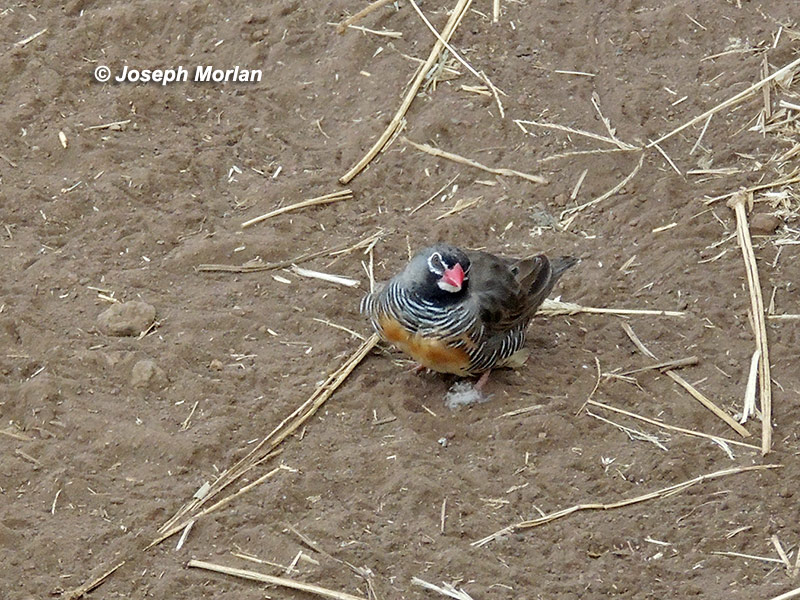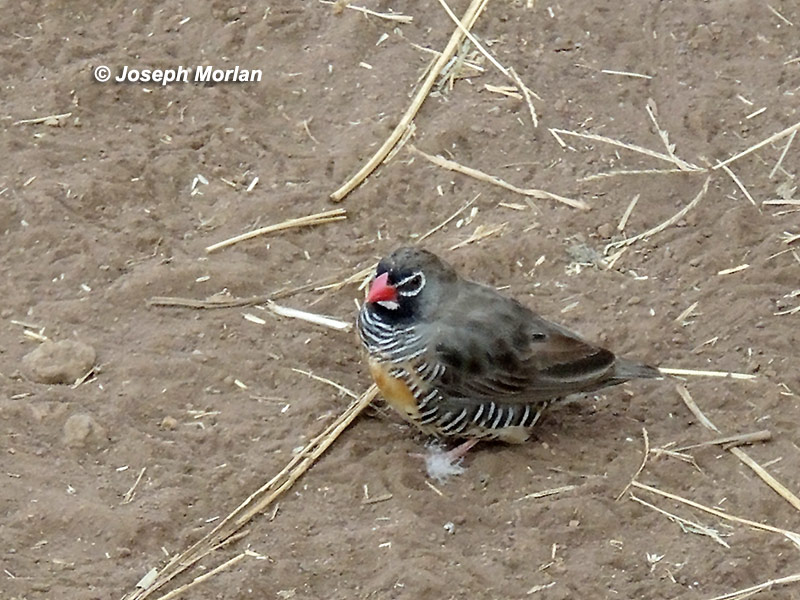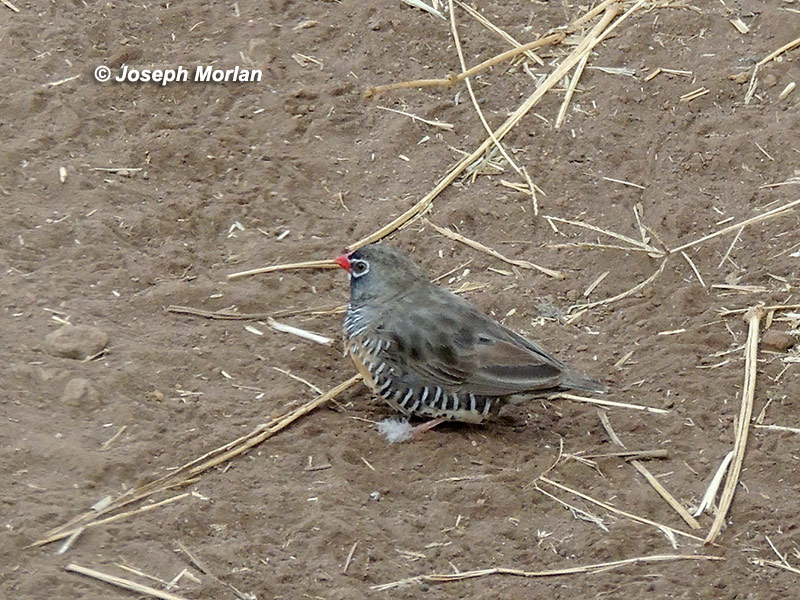


These small, well-marked male Estrellids were difficult to see as they foraged in the grass, but we estimated at
least 20 individuals on the floor of the crater. There could have been many more.
Clements recognizes three species of quailfinch as follows:
- Black-faced Quailfinch (Ortygospiza atricollis)
- Red-billed Quailfinch (Ortygospiza gabonensis)
- African Quailfinch (Ortygospiza fuscocrissa)
IOC follows the same taxonomy but uses Black-chinned Quailfinch instead of Red-billed Quailfinch for the English
name of #2.
HBW lump all three into African Quailfinch (Ortygospiza atricollis) which has the unfortunate consequence
of pairing the English name of one Clements/IOC species with the scientific name of another. The authority for
lumping all three appears to be Payne & Sorenson (2007).
Is there a reason why neither IOC nor Clements have embraced lumping the quailfinches into a single species? Is
there more recent research on the subject which would call into question the conclusions of Payne & Sorenson?
Formerly called African Quail-Finch or simply Quail-Finch,
Reference
Payne, Robert B. & Sorenson, Michael D. (2007): Integrative systematics at the species level: plumage, songs
and molecular phylogeny of quailfinches Ortygospiza. Bull. B.O.C. 127(1): 4-26. [PDF]
Nikon P510 Coolpix Point-and-shoot.